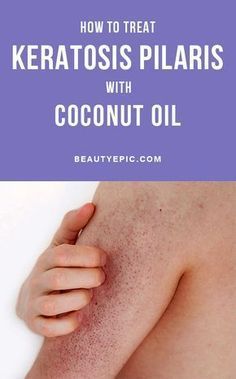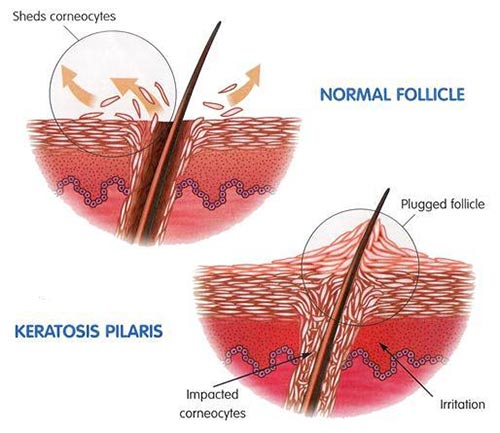
Keratosis pilaris is actually a very common skin problem that look like a bumpy "pink" skin texture on the legs, arms, and faces, usually caused by excessive keratin plugging on hair follicles. Although the condition is generally harmless, there are several effective means to manage and treat the puffy texture.
The first and probably most effective Keratosis Pilaris treatment is to apply heat. Heat is used for treating different skin conditions, but this condition is especially delicate, as it can be caused by dryness and excessive dryness. You can start applying heat on the affected area two to three times a day to get instant relief, but you should not overdo it.
Another effective treatment is topical retinoids. These are synthetic substances that can help in stimulating the regrowth of hair. Retinoids are available in the form of creams, gels, lotions, and other topical solutions, depending on the type of Keratosis Pilaris you have. Some popular products include Accutane, which must only be used under the strict medical supervision of a dermatologist, and Retin-A, which can also be used without the medical supervision.
Keratosis pilaris may also be cured through laser surgery. This treatment involves the use of ultraviolet light on your skin. As long as you can afford the procedure, you will have an increased level of coverage and you will get instant results in less time. Laser treatments work by removing the top layer of the skin, leaving the lower layer intact. With its ability to stimulate the regrowth of hair, this method is the best at addressing Keratosis Pilaris symptoms.
Another effective treatment for Keratosis Pilaris is through surgery. The surgeon would remove the infected hair and the keratin plug, or plumping device, with the help of an anesthesia. This method is commonly referred to as surgical excision of keratosis.
If you cannot afford surgery, or if your skin has not healed enough to be operated on, another invasive treatment can be used. This is known as photodynamic keratomileusis, or Kerkorelisse, where light is applied onto the skin and laser is used to treat the affected area. This method can be done for long periods of time, depending on the patient's skin condition.

It is important to note that in spite of all the keratosis pilaris treatments available, there is no sure cure to this skin condition
So, whatever treatment is taken into account, the treatment must be continued in order to keep up a continuous treatment. In the event that no noticeable difference is seen after some time, the doctor might recommend a more invasive therapy or procedure such as surgery.
Kerkorelisse, laser therapy and excision of keratosis, all offer great alternatives when it comes to Keratosis Pilaris treatment. However, you must bear in mind that each method has a downside, and they should never be tried at one time.
When using laser therapy or excision of Keratosis Pilaris, you have to remember to follow the recommended dosage of your dermatologist. You do not want to go overboard because of the risk of scarring and infection. Also, remember that you should never attempt to self-treat with this treatment since doing so will most likely lead to a relapse.
To begin with, you should consult your dermatologist about how often you are supposed to receive laser therapy. He will also tell you the type of laser that will be used and how much you should expect to pay for it. After the consultation is done, he will send you brochures of other therapies and procedures that can also be applied together with laser therapy.
Before you begin the therapy, you should ensure that your hair is properly trimmed before you proceed to your next step, which is surgery. The length of hair needs to be at least one-third of the scalp. Then, you need to apply a gel onto the affected areas twice a day.
As you follow the instructions given during your laser therapy, the treatment usually takes from eight to twelve sessions. These sessions should continue to follow a three-week cycle. You need to ensure that you take your time in terms of not using too much gel as too much will cause irritation.